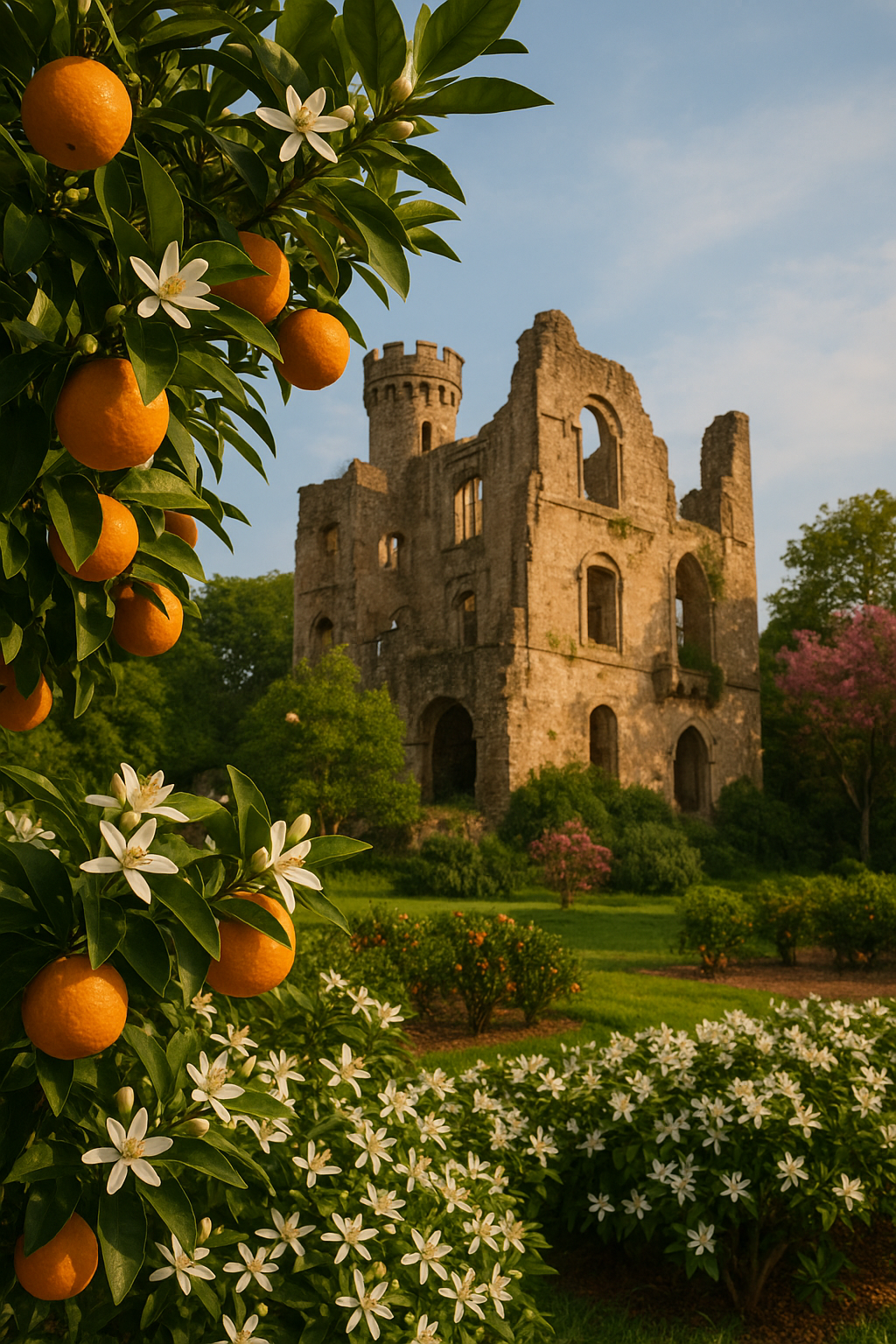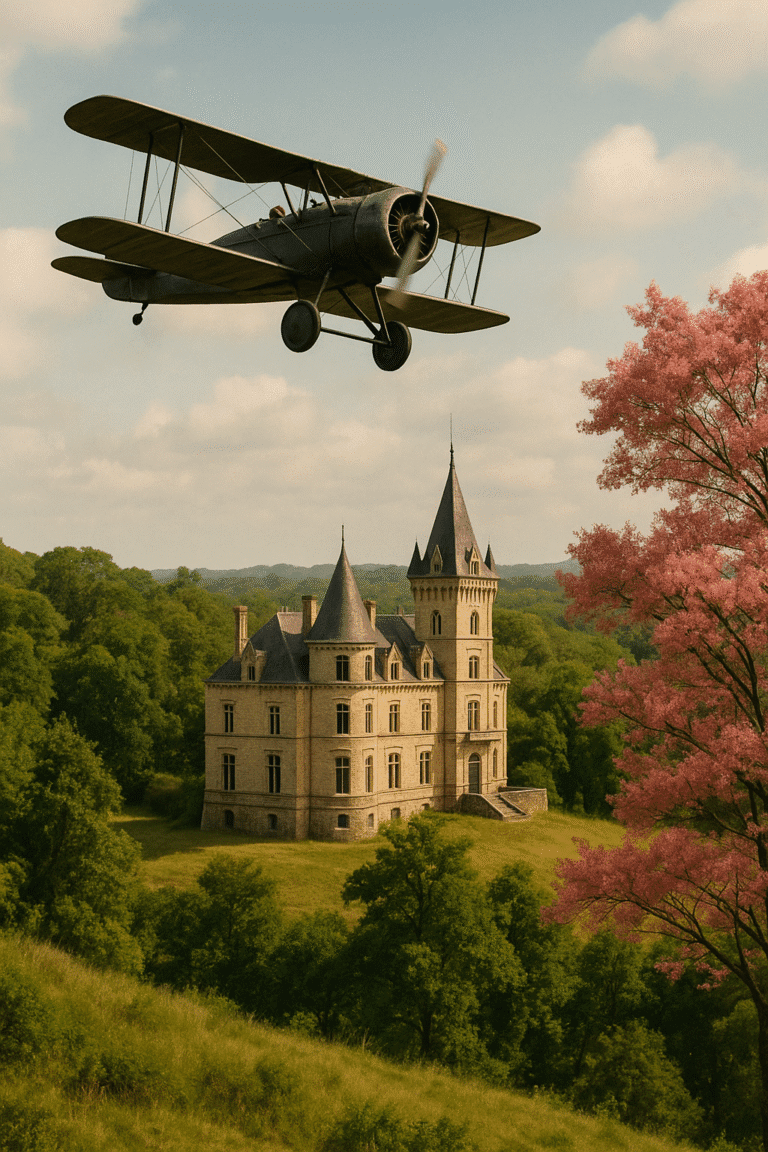“Il castello dove nacque il piccolo principe”
🌿 The Count’s Castle and The Little Prince

My great-grandfather Michelangelo and his twin brother Felice left southern Italy at the end of the 19th century. They were barely teenagers, but they knew their future wasn’t there. In their homeland, brigands — rebel and armed groups opposing Italian unification — created a constant atmosphere of violence. They robbed, extorted, attacked entire towns. Living with three older sisters in that environment was far too risky. So, with more courage than certainty, the brothers made a decision, to leave.
Their parents, educated and with a broader vision of the world, didn’t want that uncertain fate for their children either. Very close by, in Potenza, there was a prestigious university, still attended by thousands of students today. Their father had studied there and worked as a notary, while their mother — an uncommon woman for her time — had studied philosophy. They raised their children with books, ideals, and a deep awareness of the value of knowledge. But they knew that knowledge alone, in a land at war, was not enough. So, with pain and hope, they supported their sons’ departure.
They chose Argentina. More precisely, a region northeast of Buenos Aires: Entre Ríos, situated between the Paraná and Uruguay rivers. A fertile, open land of citrus and vines, where many other Italians had already found hope. Concordia was their destination — a city surrounded by living nature, which seemed to promise a different kind of life.
At just fourteen, they left behind the Lucanian Alps and set off toward the unknown. But the longing for freedom, peace, and progress gave them wings. They worked hard from the first day, and later brought their family over. Over the years, they built a legacy: farmland, livestock, trade routes. They brought in the finest Shortorn specimens from England. With their constant work and vision for the future, they became key figures in the rural world of Entre Ríos, Argentina.
But this story is not just about them.
Concordia, with its lush vegetation, humid climate, and a deep, crystal-clear river flowing like a living artery, also attracted other kinds of dreamers. One of them was a French nobleman — Count Demachy — who, dazzled by the beauty of San Carlos Park, had a castle built there. He brought everything from Europe: marble, furniture, crystal chandeliers. And he also brought his wife, a ballerina who had left the stage for love.
For years, they lived there as if that corner were their own tropical kingdom. The castle rose atop a hill, surrounded by blooming pink lapachos and jacarandas swaying in the river breeze. The sunsets lit the stones ablaze, and the dirt roads smelled of damp orange trees.
And also drawn by the friendship that bound him to the Count and his many invitations, a young French aviator flew over the region. Some say he came from Brazil and decided to venture further into Argentina to visit his friend. But his plane had trouble and had to make an emergency landing near Concordia. He needed help. That’s how Antoine de Saint-Exupéry arrived at the castle.
He was not yet the acclaimed author of The Little Prince, but rather an air explorer, a solitary man in a foreign land. There, among orange trees and open skies, he found a pause. He flew over the fields, walked the park’s paths, and according to many accounts, it was there that he began to sketch his most beloved work.
Perhaps it was that blend of nostalgia, strangeness, and tenderness that ignited his imagination.
Perhaps it was the arrival of spring, with orange blossoms in bloom — able to transport one to the tender days of childhood — that led him back to an innocent tale, but above all, a deeply moving one.
A story that spoke of the essential, without adornment, as if only a pure heart could write it.
Because sometimes, you don’t need a desert for a fox to appear. Sometimes a forgotten castle, a turquoise sky, and an unexpected town are enough.
The castle came to an abrupt end. When the Count’s wife left him, he too decided to leave. He departed with a broken heart, abandoning everything. And legend has it that after his departure, the townspeople looted the castle and eventually set it on fire. Today, only ruins remain, covered in moss and memory.
But if one walks through San Carlos Park in silence, letting the sounds of wind in the leaves and the crunch of tall grass underfoot guide them, it seems that something of that world still lingers. As if Concordia kept in its humid air the voices of those who dreamed of beginning again — of those who came to write, through words or actions, a story that didn’t yet exist.
And if the silence is true, perhaps one might also hear the soft sound of the Count’s horses’ hooves crossing the woods, like a melody that transcends time.


